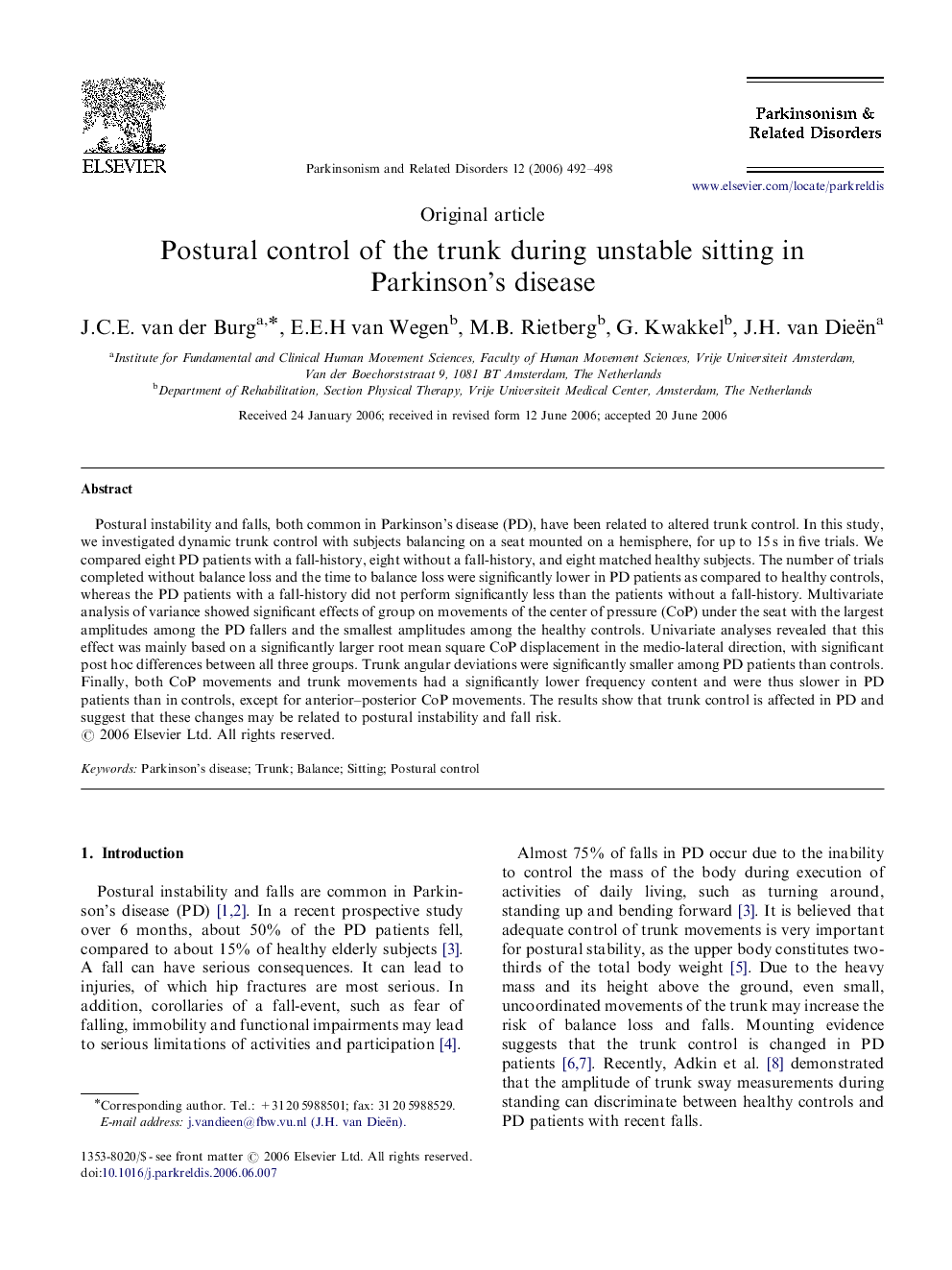| Article ID | Journal | Published Year | Pages | File Type |
|---|---|---|---|---|
| 1921676 | Parkinsonism & Related Disorders | 2006 | 7 Pages |
Postural instability and falls, both common in Parkinson's disease (PD), have been related to altered trunk control. In this study, we investigated dynamic trunk control with subjects balancing on a seat mounted on a hemisphere, for up to 15 s in five trials. We compared eight PD patients with a fall-history, eight without a fall-history, and eight matched healthy subjects. The number of trials completed without balance loss and the time to balance loss were significantly lower in PD patients as compared to healthy controls, whereas the PD patients with a fall-history did not perform significantly less than the patients without a fall-history. Multivariate analysis of variance showed significant effects of group on movements of the center of pressure (CoP) under the seat with the largest amplitudes among the PD fallers and the smallest amplitudes among the healthy controls. Univariate analyses revealed that this effect was mainly based on a significantly larger root mean square CoP displacement in the medio-lateral direction, with significant post hoc differences between all three groups. Trunk angular deviations were significantly smaller among PD patients than controls. Finally, both CoP movements and trunk movements had a significantly lower frequency content and were thus slower in PD patients than in controls, except for anterior–posterior CoP movements. The results show that trunk control is affected in PD and suggest that these changes may be related to postural instability and fall risk.
